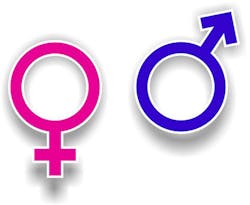Before puberty, boys are more likely than girls to have these health issues. However, that statistic changes when they become young adults, according to allergist Dr. Renata Engler. The reasons for these sex differences are complex and vary with age. There is a clear need for improved understanding of how sex and/or gender affects diagnosis, treatment and outcomes. As a review, Sex refers to biological differences; chromosomes, hormonal profiles, internal and external sex organs between males and females, and Gender describes the characteristics that a society or culture delineates as masculine or feminine. "The importance of sex differences in the practice of allergy-immunology cannot be overstated," Engler said in an ACAAI news release. "Improved sex/gender-based medicine and research practices will benefit men and women alike."(1) Genetics also play an important role in allergy and asthma risk. If parents have either of these conditions, their children are at increased risk. In Italy, the Chamber of Deputies of the Italian Parliament submitted legislation concerning “Gender Medicine” submitted to the Chamber on 5th of August, 2013.(2) According to the document, women and men will be affected by differing pathologies during their lifetime and will show differing symptoms even for the same pathology. Women fall ill more often and take more medication than men. Moreover, diseases common to both men and women such as osteoporosis, arthritis, and mental illnesses affect women more than men due to various factors such as biochemical, physiological and social differences.(2) It goes on to discuss cardiovascular diseases, the distinctive nature of female biology and behavior, and the current medical methodology of treating female patients as if they were male organisms. This practice places women at a disadvantage in relation to men, with serious shortcomings and unevenness in terms of the type of medical care they receive. The proposed bill includes six Articles.
For more information, view the survey(4) and the White Paper: Domestic Violence and the Role of the Healthcare Provider, The Value of Educating on Assessment and Intervention Strategies.(5)
References
1. American College of Allergy, Asthma and Immunology, news release, Nov. 8, 2013.
2. http://genderedinnovations.stanford.edu/policy/ItalianNationalGenderMedicineBill2013.pdf.
3. http://www.euro.who.int/__data/assets/pdf_file/0006/64941/E92846.pdf.
4. http://responsibility.verizon.com/assets/docs/VZF_MORE_GfK_Survey_v2_HIGH_RES.pdf.
5. http://responsibility.verizon.com/assets/docs/WhitePaper_DomesticViolence.pdf.











